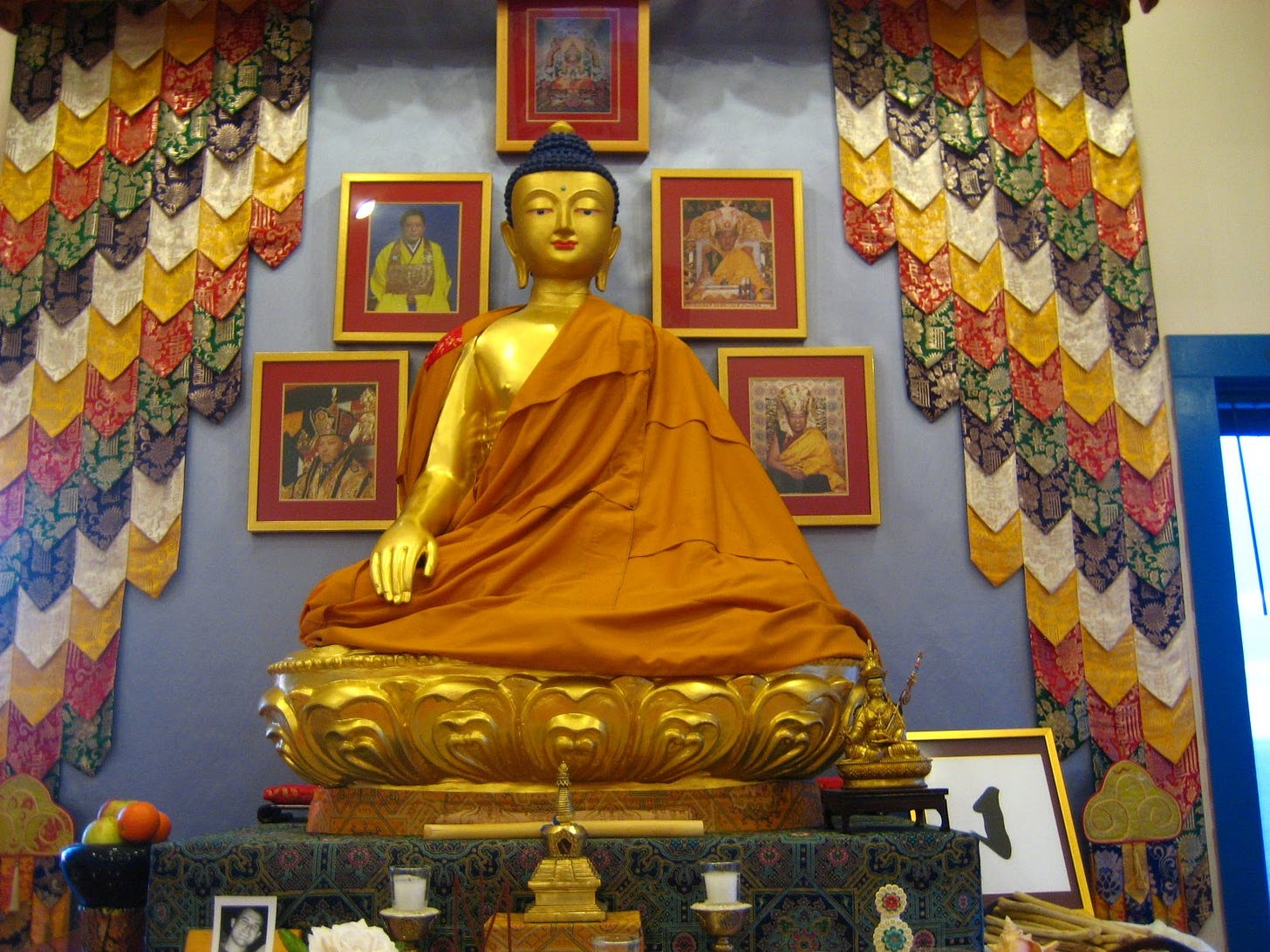Zen in Ten: "Have No Designs on Becoming a Buddha"
Zazen Is an Expression of Buddha Awareness

Although Zen is a body practice, and there’s no substitute for sitting meditation, knowledge gleaned from words and phrases can perfume our heart-mind-body while on and off the cushion. All the quotes and paraphrases below are from the illuminating essay “Zazen as Enactment Ritual” by Taigen Dan Leighton, the guiding teacher of Ancient Dragon Zen Gate in Chicago. Leighton’s essay can be found in this book: Zen Ritual: Studies of Zen Buddhist Theory in Practice.
Some people consider “Buddhist meditation as an instrumental technique aimed at obtaining a heightened mental or spiritual state, or even as a method for inducing some dramatic ‘enlightenment’ experience.”
“In some branches of the Zen tradition, zazen has been seen not as a means to attain some result, but as a ritual enactment and expression of awakened awareness. . . Zen meditation and practice [is approached] as a ceremonial, ritual expression whose transformative quality is not based on stages of enlightenment or meditative prowess.”
Kukai (774-835), the founder of Shingon (True Word), “emphasized the effects of teachings over their literal meaning. . . For Kukai, physical postures, utterances, and mental imagery are expressions of ultimate reality, and by intentionally engaging in them, practitioners are led to realization of that reality. The performance of the ritual practice helps effect an expressive realization deeper than mere cognition.”
For Eihei Dogen (1200-1253), the founder of Soto Zen in Japan, “the heart of spiritual activity and praxis [is] the enactment of buddha awareness and physical presence rather than aiming at developing a perfected, formulated understanding.”
In his essay “Fukanzazengi” (Universally Recommended Instructions for Zazen), Dogen offers postural instructions, details for preparing the meditation space, and tips on working with the mind:
For sanzen, a quiet room is suitable. Eat and drink moderately. Cast aside all involvements and cease all affairs. Do not think good or bad. Do not administer pros and cons. Cease all the movements of the conscious mind, the gauging of all thought and views. Have no designs on becoming a Buddha.
With this last admonition, “Have no designs on becoming a buddha,” Dogen emphasizes “the non-instrumental and instead ritual nature of this activity.” Practicing meditation is not a tool we employ to attain some special, future state of enlightenment as he point out in this statement: “The zazen I speak of is not [learning] meditation practice. It is simply the Dharma gate of peace and bliss, the practice-realization of totally culminated awakening.”
“The point is to enact the meaning of the teachings in actualized practice, and the whole praxis, including meditation, may thus be viewed as ritual, ceremonial expressions of the teaching, rather than as means to discover and attain some understanding of it. . . The mindful and dedicated expression of meditative awareness in everyday activities.”
Dogen’s understanding of zazen as practice-realization was influenced by the 12th century Soto ancestor Hongzhi Zhengjue, whose meditation teaching is called “silent illumination.” Here’s a passage describing this practice:
“The practice of true reality is simply to sit serenely in silent introspection. When you have fathomed this you cannot be turned around by external causes or conditions. This empty, wide open mind is subtly and correctly illuminating . . . Here you can rest and become clean, pure and lucid. Bright and penetrating, you can immediately return, accord, and respond to deal with events.”
“Keizan Jokin (1264-1325), a third generation successor of Dogen, is considered the second founder of Soto Zen after Dogen. Keizan’s manual on Zen meditation begins, ‘Zazen just lets people illumine the mind and rest easy in their fundamental endowment. This is called showing the original face and revealing the scenery of the basic ground.’ ”
To learn more about Dogen’s views on shikantaza (“just sitting”) read his essays “Bendowa” (Talk on the Wholehearted Engagement of the Way) and “Bendoho” (The Model for Engaging the Way).



